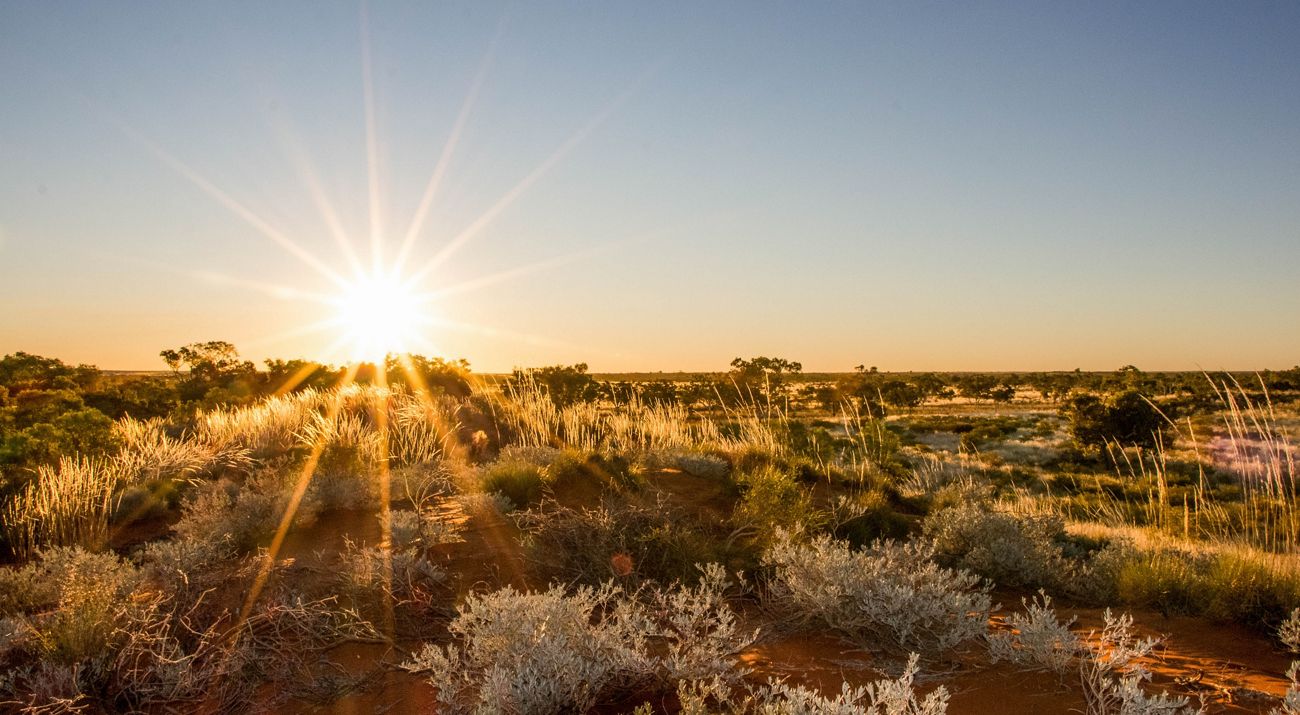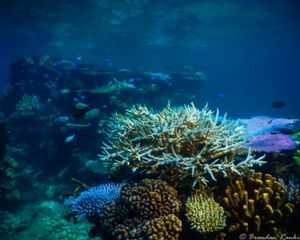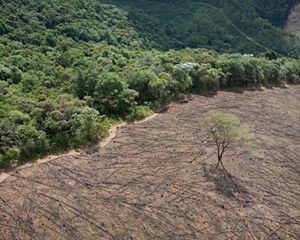Taking on our biggest conservation challenges
Four priority actions that can lead us to a world in which both people and nature thrive.
By Rich Gilmore, (former) Director, The Nature Conservancy Australia
Breathing in the sweet, aromatic smoke of the burning green leaves of a river red gum, my shoes caked in sticky red mud from a rare downpour in a parched landscape, I’m struck by the significance of the moment.
I’m in Maude, a tiny hamlet on the banks of the Murrumbidgee River in western New South Wales, and the smoke I am bathed in is the symbolic welcome of the Nari Nari people, Traditional Owners of this special part of Australia.
It's May 2018, and I am here on behalf of The Nature Conservancy (TNC) to accept an awesome responsibility; helping the Nari Nari regain management of 87,000 hectares of their Traditional lands for the first time in more than a century.
Known as Gayini, the wetlands, creeks and forests here are some of the most important in the Murray-Darling Basin. Reintroducing Indigenous management and knowledge, combined with the best conservation science and sustainable economic development epitomises TNC’s approach to conservation in the modern era – finding new and innovative ways to take on the world’s biggest conservation challenges at scale.
We all understand that the environment is under enormous pressure and many of us share TNC’s vision to conserve the lands and waters on which all life depends. But where should we focus our efforts and, in particular, our limited financial resources in order to have the greatest possible positive impact?
We recently set out to answer to this question. Using the collective intellect of our 400 staff scientists and hundreds more in partner universities and NGOs — we identified four priority actions that, if addressed, can lead us to enjoy a world in which both people and nature thrive.
Priority 1: Tackle climate change
Climate change isn’t a possible distant threat—it’s real and it’s happening now. The past three years were hotter than any other time in recorded history. January 2019 was the hottest month in Australia since records began.
The Nature Conservancy is focused on innovative natural climate solutions that match the urgency of this crisis all around the world. In Australia we’re protecting woodlands and wetlands that store carbon taken from the atmosphere, and we’re helping Traditional Owners manage fire more effectively on their lands.
For example, for a number of years we supported the Martu people of the Western Desert in their determination to manage their vast and awe-inspiring traditional lands. Martu are leaders in Australia for actively managing their Country for the continuation of their culture and the conservation of its threatened wildlife like the Greater Bilby and Black-flanked Rock-wallaby.
Martu country is one of the most special places not only in Australia, but in the world. It is the single holding of the largest and most intact desert landscape left on the planet.
This management includes the reinstatement of age-old burning practices during the cooler months of the year that reduce the extent and severity of hot season wildfires and hence provide a net reduction in greenhouse gas emissions.
Quote
In 2018 we helped abate net greenhouse gas emissions by 1.1 million tonnes per annum with careful fire management. The equivalent of taking more than 183,000 cars off the road each year.
We continue to support Martu and other Indigenous desert groups through our association with the Ten Deserts Project – spanning a third of Australia – the largest Indigenous-led conservation project on Earth.
In our northern tropical savannas too, we’re providing ongoing support to Indigenous landholders, such as the Kimberley's Fitzroy River region, to assist them in their efforts to care for their Country, managing better fire regimes, creating jobs and deriving income from reductions in greenhouse gas emissions.
Priority 2: Protect land & water
Ever since our inception in 1951, The Nature Conservancy has led the way in saving many of the most iconic landscapes on Earth. Globally, we have helped protect millions of hectares of land, conserved thousands of river kilometres and developed more than 100 marine projects.
In Australia we’ve been a part of several major land acquisitions for conservation including Eurardy Reserve in Western Australia, Fish River Station in the Northern Territory and additions to the Adelaide International Bird Sanctuary in South Australia.
Conservation in the lower Murray-Darling Basin
As described above, last year we took over management of the 87,816 hectare Gayini property in southern New South Wales in a consortium with the Nari Nari Tribal Council, the Murray Darling Wetlands Working Group and the Centre for Ecosystem Science at the University of NSW.
Gayini (meaning 'water' in Nari Nari language) is part of the Lowbidgee floodplain – the largest remaining area of wetlands in the Murrumbidgee Valley – within the southern Murray-Darling Basin. It’s an area of national and international conservation significance.
Native Australian birds are particularly abundant here ranging in size from the tiny, cryptic Spotted Pardalote to the big, impressive Emu in large numbers. Of highest significance, the wetlands provide feeding and breeding habitat for many different species of freshwater birds which can amass in large nesting colonies when conditions are right – species like the Straw-necked Ibis, Royal Spoonbill, Little Pied Cormorant and Australian Pelican.
Nationally listed threatened species are also protected at Gayini Nimmie-Caira including one of Australia’s largest frogs – the Southern Bell Frog – and two endangered birds – the Australasian Bittern and Australian Painted-snipe.
Wildlife in the lower Murray-Darling
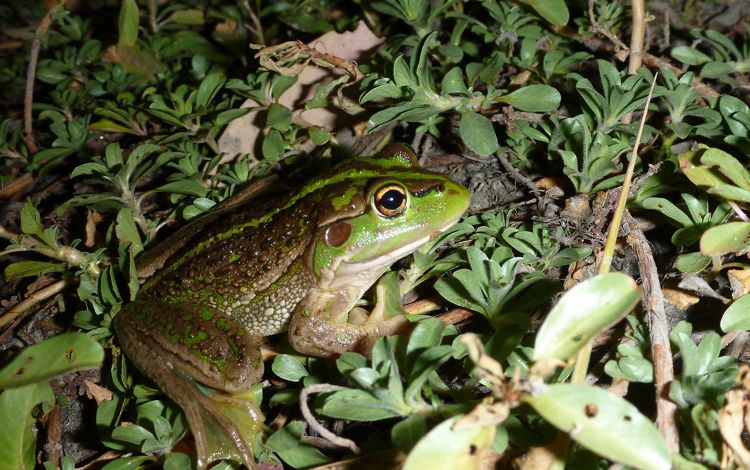
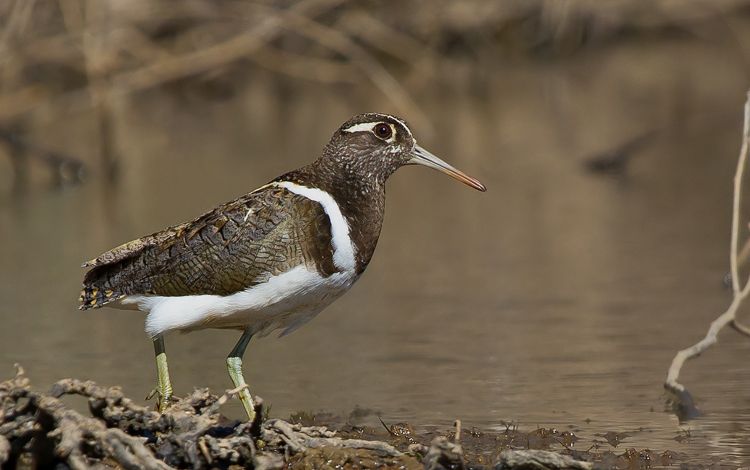
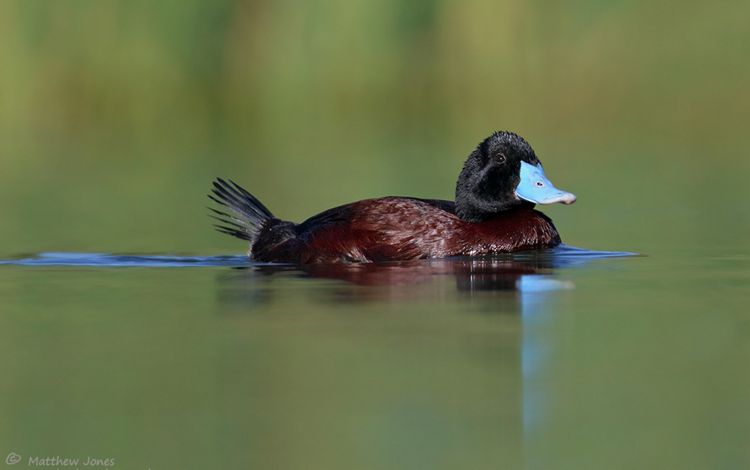
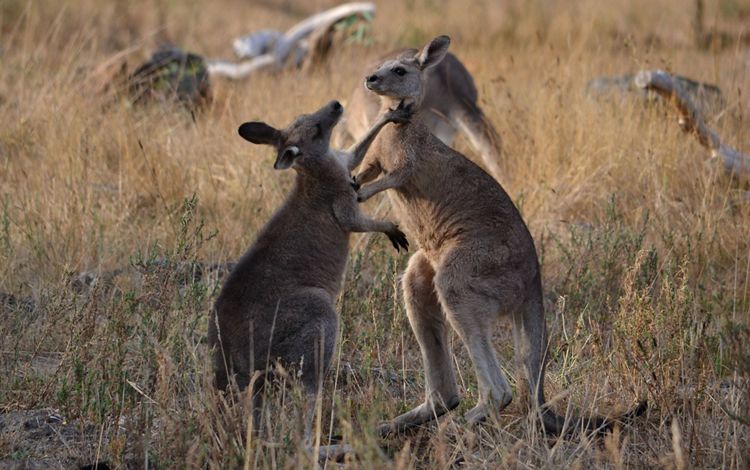
While around half of the property was previously used for cropping and grazing before being handed over to The Nature Conservancy consortium, the majority of it remains covered with significant native vegetation in good or recovering condition. Our management plan for the property will permanently protect these habitats for the wealth of species that rely on them for their survival.
The entire Gayini area is also a rich cultural landscape that has supported Aboriginal people for 50,000 years. The property is home to a wealth of Indigenous cultural features from sacred canoe trees to ancient burial mounds and camp sites.
For tens of thousands of years the First Australians in this area actively managed their Country to boost its productivity – enhancing fish and bird stocks, and vegetation growth.
Now part of the team managing Gayini, Nari Nari are once more in possession of their lands, caring for it using a combination of traditional and modern techniques to improve its productivity and enhance its values.
Land management activities at Gayini have started with roads and infrastructure being assessed and maintained, culture and heritage protection works carried out, and the removal of feral pests.
Feral animals present a serious threat to both the conservation of native species (either through predation, competition for limited resources or destruction of habitat) and the ongoing productivity of agriculture on Gayini and neighbouring properties alike. In the second half of 2018 a total of 2,655 feral pests were removed including almost 1,500 pigs, more than 1,000 deer and many foxes and cats.
Rebuilding lost oyster reefs
In some cases, however, protection of natural habitats is too late. Years of commercial dredging, pollution and overfishing have decimated the shellfish reefs of southern Australia – Australia’s most endangered marine ecosystem.
In response, we’re rebuilding these shellfish reefs in places like:
- Noosa (Queensland)
- Port Phillip Bay (Victoria)
- Gulf St Vincent and Glenelg (South Australia), and
- Oyster Harbour, Peel-Harvey Estuary, and the Swan-Canning Estuary (Western Australia)
Quote
Research by our scientists has discovered that 90 percent or more of these former oyster reefs have been wiped out.
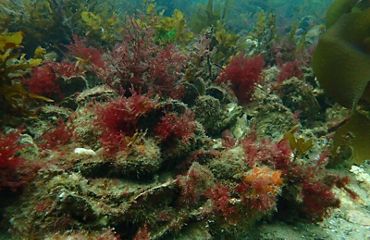
Priority 3: Build healthy cities
Cities are growing—fast. By 2050, two-thirds of the world’s population will live in urban areas.
Cities are expanding their footprint at an alarming rate, putting habitat, human health and access to food and water at risk. But with smart planning, science-based solutions and strong partnerships, we can make our cities resilient, healthy and equitable. Our research has confirmed that having more trees in the urban environment brings us better air, soil and water quality; significantly reduces heat; improves mental health and wellbeing; and improves property value. And of course, more trees means more important habitat for urban wildlife and recreating urban humans.
That’s why we’ve been working over the last two years in conjunction with the global 100 Resilient Cities program, Resilient Melbourne, the Victorian Government, developers, planners, communities and 32 local governments, to develop a strategy know as Living Melbourne: our metropolitan urban forest. The strategy covers not just trees, but all types of vegetation in Melbourne’s parks, gardens, river and creek corridors, wetlands, street and railway corridors, backyards and community gardens. Living Melbourne was released publicly in June 2019.
I am optimistic that by continuing to explore innovative new ways to address these global priorities with a diverse range of partners like Nari Nari Tribal Council, Tiverton Agriculture and others, we stand a good chance of passing onto future generations a world where nature thrives and continues to sustain us.
If we are to succeed in protecting our environment and saving threatened species from extinction, nature needs people to get on board, to change their behaviour and patterns of consumption, and to invest in sustainable solutions.
Originally appeared in PT Explorers magazine, Aug / Sep 2019 edition
View original
Get the latest updates
Keep up-to-date on how we're taking on big conservation challenges and conserving Australia's iconic natural landscapes and crucial wildlife habitats.
